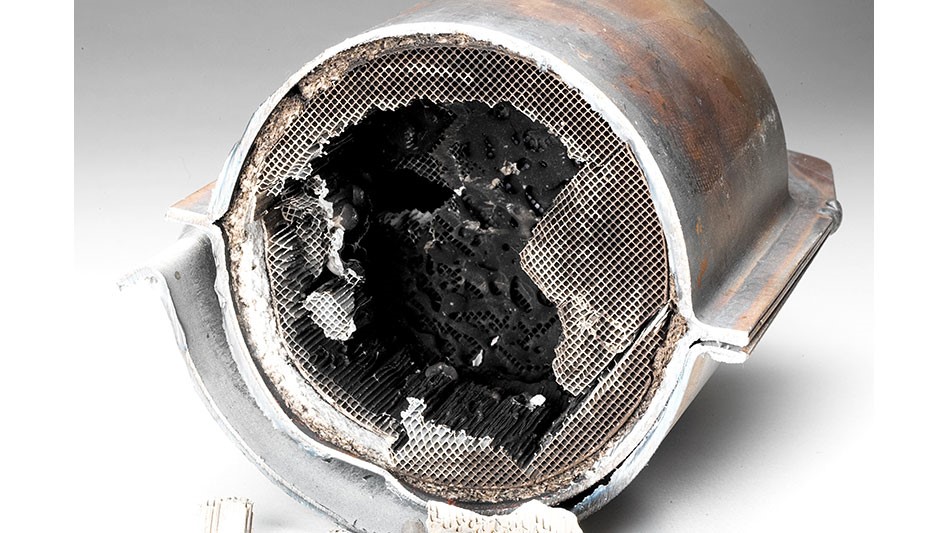Introduction
Catalytic converters are essential components in modern vehicles, playing a critical role in reducing harmful emissions by converting toxic gases into less harmful substances. They primarily utilize platinum group metals (PGMs), including platinum (Pt), palladium (Pd), and rhodium (Rh), to facilitate these chemical reactions. Understanding the amount of platinum in a catalytic converter is vital for both environmental and economic reasons, as these precious metals are valuable and increasingly sought after for recycling.
Composition of Catalytic Converters
Platinum Group Metals
The catalytic converters typically contain a combination of PGMs, which include:
- Platinum (Pt): Primarily used for oxidation reactions.
- Palladium (Pd): Used for both oxidation and reduction reactions.
- Rhodium (Rh): Mainly used for reduction of nitrogen oxides (NOx).
The exact composition of these metals can vary significantly depending on the vehicle’s make, model, and year of manufacture.
Average Platinum Content
The average amount of platinum in a catalytic converter can range from 1 to 3 grams per unit, although this can vary based on several factors:
- Type of vehicle: Different vehicles have different requirements for emissions control.
- Age of the vehicle: Older models may have different compositions compared to newer ones.
- Engine type: Gasoline engines may use different ratios of PGMs compared to diesel engines.
Recovery and Recycling of Platinum
Importance of Recycling
Recycling platinum from spent catalytic converters is crucial for several reasons:
- Environmental impact: Reduces the need for mining, which can be detrimental to the environment.
- Economic benefits: Recovered platinum can be reused in new catalytic converters or other applications, providing significant economic value.
Recovery Techniques
Recent advancements in recovery techniques have improved the efficiency and effectiveness of extracting PGMs from used catalytic converters. Common methods include:
- Hydrometallurgical processes: Involves leaching the metals from the substrate using chemical solutions.
- Pyrometallurgical processes: Involves high-temperature processes to melt and separate the metals.
Economic Value
In 2020, the total value of PGMs recovered from recycling activities was estimated at about $12 billion, with significant amounts of platinum, palladium, and rhodium being extracted from spent catalytic converters.
Global Platinum Supply and Demand
Primary Production
The primary production of platinum comes from mining activities, primarily in South Africa, which accounts for about 70% of the global supply. Other major producers include Russia, Zimbabwe, and Canada.
Secondary Production
Secondary production, or recycling, plays a significant role in meeting the global demand for platinum. In 2020, recycling accounted for about 30% of the total platinum supply, with the majority coming from spent catalytic converters.
Demand Sectors
The demand for platinum comes from various sectors, including:
- Automotive: Used in catalytic converters for emissions control.
- Jewelry: Platinum is a popular choice for jewelry due to its durability and luster.
- Industrial: Used in various applications such as chemical processing, electrical, and petroleum refining.
Market Trends
The platinum market has experienced significant volatility in recent years, with prices fluctuating based on supply and demand factors. The COVID-19 pandemic had a significant impact on the market, leading to a decline in demand from the automotive and industrial sectors.
Environmental Impact of Platinum Mining
Mining Techniques
Platinum is primarily extracted through mining operations, which can have significant environmental impacts. Common mining techniques include:
- Open-pit mining: Involves removing large amounts of overburden to access the ore.
- Underground mining: Involves digging shafts and tunnels to reach the ore deposits.
Environmental Concerns
The environmental concerns associated with platinum mining include:
- Land disturbance: Open-pit mining can lead to significant land disturbance and habitat destruction.
- Water pollution: Mining activities can contaminate nearby water sources with heavy metals and other pollutants.
- Air pollution: Dust and emissions from mining equipment can contribute to air pollution.
Mitigation Strategies
To mitigate the environmental impact of platinum mining, various strategies have been implemented, such as:
- Reclamation and rehabilitation: Restoring mined areas to their original condition or a suitable alternative.
- Water treatment: Treating contaminated water to remove pollutants before discharge.
- Emission control: Implementing measures to reduce air pollution from mining activities.
Substitutes and Alternatives
Palladium and Rhodium
Due to the increasing demand and limited supply of platinum, automakers have been exploring the use of palladium and rhodium as substitutes in catalytic converters. These metals have similar catalytic properties and can be used in place of platinum, although they may have different performance characteristics.
Alternative Technologies
Researchers are also exploring alternative technologies that could potentially reduce the reliance on platinum in catalytic converters, such as:
- Lean NOx Traps (LNTs): These devices use alternative materials to reduce nitrogen oxides without the need for platinum.
- Selective Catalytic Reduction (SCR): This technology uses a urea-based solution to convert nitrogen oxides into nitrogen and water, reducing the need for platinum.
Factors Influencing Platinum Content
Vehicle Specifications
The platinum content in a catalytic converter is influenced by various vehicle specifications:
- Engine size: Larger engines typically require more platinum for effective emissions control.
- Fuel type: Diesel engines may have different platinum requirements compared to gasoline engines.
Regulatory Standards
Stricter emissions regulations have led manufacturers to adjust the composition of catalytic converters, often increasing the amount of PGMs used to meet these standards.
Table of Platinum Group Metals Properties
| Property | Platinum | Palladium | Rhodium |
|---|---|---|---|
| Melting Point | 1768.3 °C | 1554 °C | 1963 °C |
| Boiling Point | 3825 °C | 3213 °C | 3727 °C |
| Atomic Number | 78 | 46 | 45 |
| Relative Atomic Mass | 195 | 106 | 103 |
| Density | 21.5 g/cm³ | 12.02 g/cm³ | 12.41 g/cm³ |
FAQs
How much platinum is typically found in a catalytic converter?
The amount of platinum in a catalytic converter typically ranges from 1 to 3 grams, but this can vary based on the vehicle’s specifications and age.
Why is platinum important in catalytic converters?
Platinum is crucial for its catalytic properties, which help convert harmful emissions such as carbon monoxide, hydrocarbons, and nitrogen oxides into less harmful substances.
What happens to spent catalytic converters?
Spent catalytic converters are often recycled to recover valuable PGMs, which can then be reused in new catalytic converters or other industrial applications.
How is platinum recovered from used catalytic converters?
Platinum can be recovered using various methods, including hydrometallurgical and pyrometallurgical processes, which involve chemical or high-temperature techniques to extract the metals.
What are the benefits of recycling platinum?
Recycling platinum reduces the environmental impact of mining, provides economic benefits by recovering valuable metals, and supports sustainable practices in the automotive industry.
Conclusion
The presence of platinum in catalytic converters is a significant factor in their functionality and value. As regulations become stricter and the demand for PGMs increases, understanding the composition and recovery of these metals will be crucial for both environmental sustainability and economic viability. The recycling of platinum from spent catalytic converters not only conserves resources but also plays a vital role in reducing the ecological footprint of the automotive industry.For further reading on the topic, you can refer to the following link: Wikipedia – Catalytic Converter.
Read more about it:https://greyhoundsverdevalley.com/how-to-screenshot-on-hp-envy/



